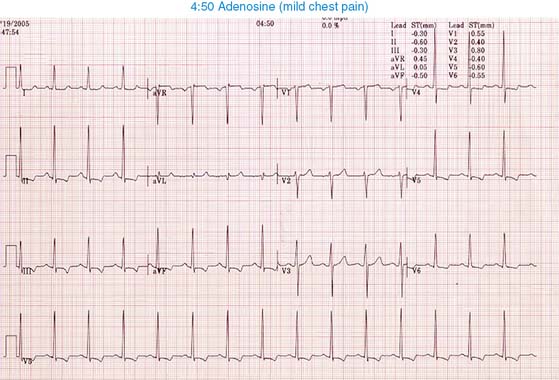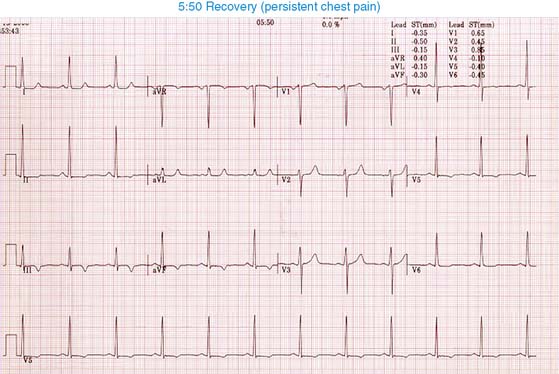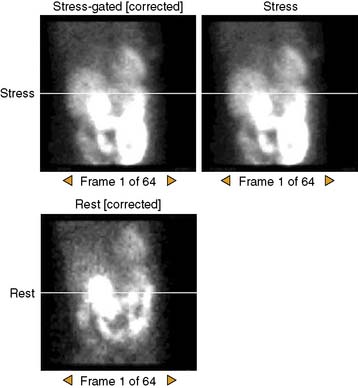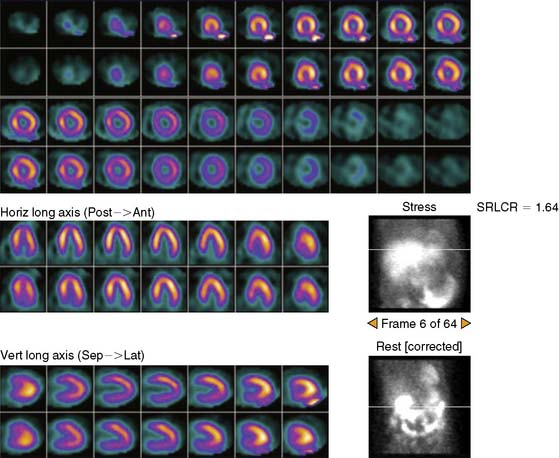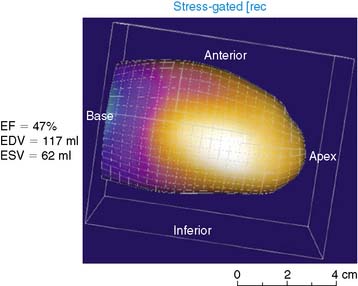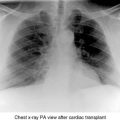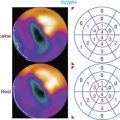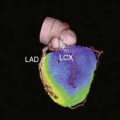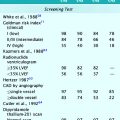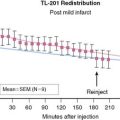Case 7
Teaching Points: Stress-Induced ST-Segment Elevation
1. Exercise-induced ST-segment elevation (in absence of baseline Q waves) suggests transmural ischemia and predicts severe (usually > 95%) coronary stenosis in the artery supplying the region with ST elevation.
2. If ST elevation is detected, inject the isotope, terminate exercise, and have a low threshold to admit the patient to the hospital for urgent coronary angiography.
3. If the patient is not admitted, perform a recovery ECG to confirm resolution of ST elevation before permitting the patient to leave the nuclear laboratory.
4. There have been a few case reports of ST elevation during recovery after adenosine stress (as in the present case report). The mechanism of ST elevation following adenosine stress is not known. In the cases reported thus far, coronary angiography has not demonstrated severe coronary artery disease. Nonetheless, until much more experience has accumulated, coronary angiography is advisable.


